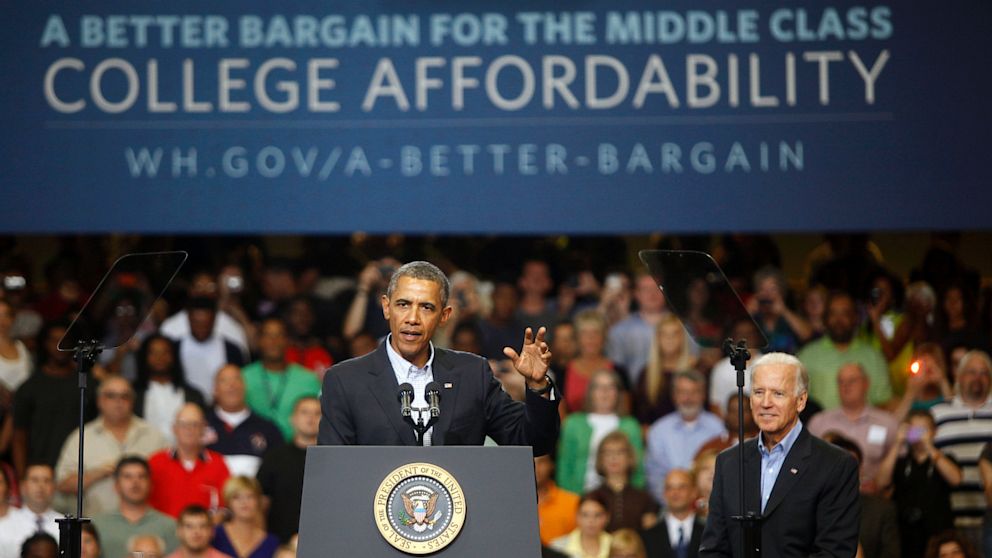Lots of Talk and Lots of Unanswered Questions On Obama's Education Plan
It remains unclear how a new college ratings system will work.

Aug. 28, 2013— -- Top White House officials stressed higher education as the ticket to a middle-class lifestyle during a briefing Tuesday with Hispanic media, but provided few concrete examples of how President Barack Obama’s new college affordability plan will work.
The broad outline is this: The administration will base how much federal financial aid colleges get on a ratings system they plan to develop in the next couple of years; they’d like to encourage innovation (read: expanded online classes) to make higher education more accessible; and they’d like to set student loan repayment plans on how much graduates earn, and offer more student loan guidance to families.
Obama’s team can implement some of those plans, like the ratings system, on their own. But some huge questions remain.
1. How exactly will the ratings system work?
Officials were vague when asked specifically how schools will be rated.
Cecilia Muñoz, director of the Domestic Policy Council, compared it to healthcare, saying they want to try to drive the college system toward one that lets people pay for outcomes - things like graduation rates and job offers. In other words, schools that don’t graduate students on time or graduate few people with jobs lined up will suffer in the ratings system and people should stop attending them.
They also said it will compare “apples to apples,” so community colleges will be compared to community colleges and four-year schools to other four-year schools. But two of the officials, Special Assistant to the President for Education Policy Roberto Rodriguez and Alejandra Ceja, director of the White House Initiative on Educational Excellence for Hispanics,avoided answering some specifics, like how vocational schools might factor into the equation. It’s also unclear how much weight different factors like diversity and affordability will carry in the equation.
While Obama made brief mention of vocational schools during his recent bus tour to talk about college affordability the administration has pushed college as the true path to success and the officials stuck to that line on Tuesday.
Rodriguez acknowledged that Latino high school dropout rates are disproportionately high but stressed the idea that “increased expectations” will help with such issues as well as increase college attendance.
We “need to do more,” Rodriguez said, to help Latinos not only reach college but to succeed once they are there.
2. Where would the money come from?
Other parts of the college affordability plan, like changing the way federal financial aid is distributed, would take help from Congress.
Rodriguez said the president’s plan would help distribute Pell Grant money smartly and that it would allow federal loan borrowers to adopt a pay-as-you-earn repayment plan. But there is no magic wand to make that happen. Lawmakers get a vote, too (literally).
Funding for programs beyond those related to college is also a big question mark. Head Start, a federal early learning program for low-income kids, took a hit when sequester cuts kicked in. More than 50,000 spots have been eliminated.
That’s a “serious concern,” Muñoz acknowledged.
And yet Ceja talked about plans to expand the program. How exactly wouldl an expansion be funded if the current setup is already cutting students to stay afloat? It’s not entirely clear. Ceja mentioned plans to engage the “philanthropic community,” but relying on donations isn’t exactly foolproof.
3. What about opposition?




